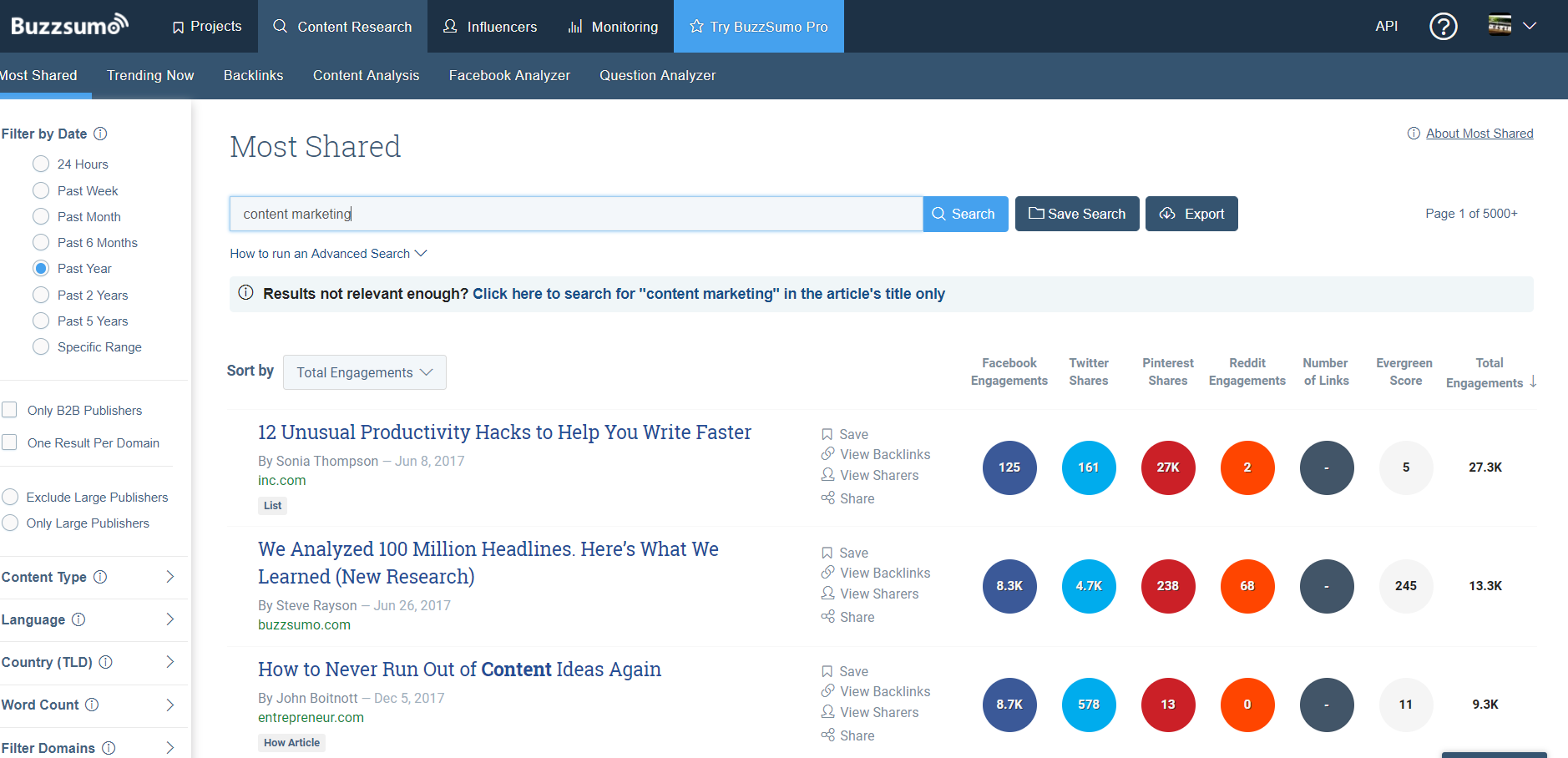In case you haven’t noticed, content marketing is huge.
Every 60 seconds, roughly 500,000 Tweets send, over three million Facebook status updates post, and close to 500 hours of video appear on YouTube. With so much content being uploaded every single second to the web, it’s tough for businesses to maintain a competitive edge.
Much of the content posted isn’t in direct competition with your company. Therefore, a competitive content marketing strategy is now more important than ever. Fortunately, you don’t have to search the web far and wide to see if you’re lagging behind in your content marketing efforts. In fact, all you really need to do is start leaning on your competitors.
When you lean on your competitors’ marketing strategies, you gain a bird’s eye view of what you’re doing right and what you’re doing wrong. As you adjust your content creation accordingly, you acquire the ability to stay a step ahead in today’s competitive online landscape.
So let’s cut right to the chase and take a look at a how-to guide for leaning on your competitors.
Getting to Know Your Competitors (domain authority)
The first step in leaning on your competitors is to identify who they are. You may think the business down the street is your biggest online competitor, but really it’s the company two states over that’s stealing all of the attention from your website.
Suppose you’re having difficulty pinpointing your competitors. In that case, SimilarWeb is an easy-to-use online tool that makes it a cinch to see which companies in your industry are providing the most competition.
After you discover who your biggest competitors are, you’ll need to decide which ones are worth leaning on the most. To do this, you can use a free tool like Moz open site explorer or MozBar extension if you’re using a Firefox or Chrome browser to check for their domain authority. Not only do these tools allow you to run a number of free searches on your competitors’ domain authority, but you can also use them to check the domain authority for specific web pages.
To get started, take your top 10 competitors and run their home URLs through a domain authority checker. The three that come out on top as having the highest domain authority are the ones you’ll want to lean on most to boost your content marketing efforts.
Checking for Competitors’ Backlinks
Now you’re going to use a tool like Ahrefs or SEMrush to analyze the backlinks your competitors are earning. In doing this, you’ll identify your competitors’ strong and weak points in the promotional methods they employ.
The easiest way to keep track of what you find is to create a spreadsheet. You’ll likely want a spreadsheet for each competitor and columns that showcase their number of backlinks, their referring domains, the anchor texts these backlinks were embedded to, and the link quality of each one.
Research at Least 500 Backlinks
This is going to be a lengthy process because you’ll want to research at least 500 backlinks per competitor if they have that many. After analyzing each backlink and determining where it’s coming from and the anchor text it uses, you can look for weaknesses.
Take, for example, one of your competitors who has a lot of backlinks that are out of context, appearing in the middle of irrelevant content. This is a major weak point that you can build on in your own content marketing strategy.
You’ll also want to see which weaknesses are most common among all of your competitors. Take, for instance, you see that none of their backlinks are being earned through long-form content. This is definitely a method of content marketing that you can use to your advantage to attract customers they are missing out on.
Competitors’ Posting Frequency
BuzzSomo is an excellent tool you can use to analyze your competitors’ posting frequency. Another tool that is useful in determining the size of your competitors’ sites and how much content they produce is SEOquake. If you find your competitors are publishing 60 posts a month to their blogs, then you’ll need to adjust your content creation schedule to meet or exceed this quota.
Regardless of how many postings your competitors make, you should be publishing new content at least 15 times a month. Travelpayouts conducted a recent research study and discovered posting this much will drive at least 2,000 organic visitors to your website each month once the content has been published for at least 12 months. All these visitors are potential leads. You can pursue each in an attempt to increase your sales revenue.
In addition to checking for your competitors’ posting frequency, you’ll need to analyze the content they are actually posting. What topics are they writing about? Do they create all their content internally, or do they frequently lean on guest post contributors?
Once you see what’s working best for them, you can start incorporating more of those aspects into your own content marketing strategy.
For competitors who lean heavily on guest post contributors, make sure to use BuzzSumo to see which of their guest authors are creating the posts that received the best performance. You can easily build a list of potential guest contributors by doing this.
As you analyze topics your competitors discuss, you’ll see which ones are receiving the highest levels of engagement from readers. If you notice a specific topic tends to garner a high number of backlinks and social shares, then this is a topic you’ll definitely want to cover in your own content.
You’ll also want to look for gaps in your competitors’ content. Take, for example, that all of your competitors are receiving a high number of backlinks and social shares for a topic about rustic furniture. As you analyze the content, though, you notice that none of them have created and shared an infographic about using rustic furniture to decorate a home.
You can use this weak point of theirs to your own advantage. Studies have proven that infographics lock in engagement and receive a ton of social sharing. And even though creating an infographic may be more costly than a simple blog posting, the return on investment could be phenomenal, including enhanced brand awareness and an increase in your sales revenue, both of which should be the top goals of your content marketing strategy.
Content Marketing and the Competition: The Takeaway
Honestly, we could go on talking about different ways to lean on your competitors to strengthen your own content marketing agenda. The tips outlined above, however, are a great starting point for staying a step ahead of your competition. Just remember, sometimes your competitors can be your most valuable asset.




